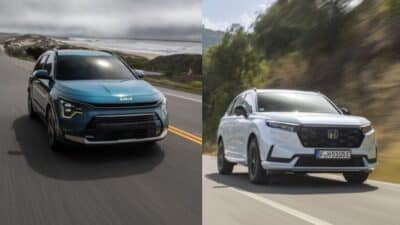As electric vehicles (EVs) gain popularity, more drivers are realizing the importance of having a reliable charging solution at home. A home EV charger allows you to conveniently charge your vehicle overnight, eliminating range anxiety and frequent trips to public charging stations. Choosing the right charger can enhance your EV experience, providing you with faster charging times and smart features that can optimize your energy usage.
Understanding the different types of home EV chargers is essential for making an informed decision. Level 2 chargers are commonly recommended for residential use, as they provide a faster charging rate compared to standard outlets. Installation is straightforward, typically requiring the assistance of a licensed electrician, ensuring your charging station is safely integrated into your home’s electrical system.
Owning a home EV charger not only saves you time but can also lead to cost savings over the long run. You’ll have the flexibility to charge your vehicle at your convenience, and in many cases, you can take advantage of lower electricity rates during off-peak hours. This is an investment that can significantly enhance your electric driving experience.
Key Takeaways
- A home EV charger helps you conveniently charge your vehicle overnight.
- Level 2 chargers are typically the best option for residential use.
- Charging at home can save you time and money in the long run.


Understanding Home EV Chargers
A Home EV Charger is essential for conveniently charging your electric vehicle (EV) at home. You can choose between different charging levels, each with its own features and benefits that suit your lifestyle and vehicle needs.
Types of Home Chargers
There are primarily three types of home EV chargers: Level 1, Level 2, and Level 3. Most homeowners opt for Level 2 chargers, which are faster and more efficient than Level 1 chargers.
Level 1 Chargers: These use a standard 120V outlet. They are suitable for overnight charging but typically add 3-5 miles of range per hour.
Level 2 Chargers: Operating on a 240V outlet, these chargers offer a significant advantage by providing 10-60 miles of range per hour of charging. Installing a Level 2 charger can greatly reduce charging time and is ideal for daily use.
Level 3 Chargers: Not typically used at home, these are fast chargers found at public stations, delivering rapid charging in about 30 minutes.
Benefits of Level 2 EV Chargers
Investing in a Level 2 EV charger for home charging offers numerous advantages.
Faster Charging: You can fully charge most EVs overnight, making it convenient to start each day with a full battery.
Wider Compatibility: Many EV models support Level 2 charging, ensuring compatibility with your vehicle.
Convenience: You won’t need to visit a public charging station frequently, saving you time.
Cost Efficiency: While the initial installation cost ranges from $800 to $2,000, level 2 chargers can save money in the long term by optimizing energy use.
By choosing a Level 2 charger, you gain efficiency and convenience in your daily life while enjoying the benefits of electric vehicle ownership.


Installation of Home EV Chargers
Installing a home electric vehicle (EV) charger requires careful planning and consideration. Key factors include selecting the right location, deciding between outdoor and indoor installation, and whether to hire a professional electrician.
Choosing the Right Location
When deciding where to install your home EV charger, consider proximity to your vehicle’s parking spot. Ideally, it should be within reach of the charging cable without stretching.
Make sure the location is easily accessible and protected from potential damage. Consider factors such as sunlight exposure and shelter from adverse weather conditions. Placing the charger near your electrical panel might ease installation and reduce costs.
Outdoor vs. Indoor Installation
Both outdoor and indoor installations have their benefits. Outdoor installations can be more convenient, especially if you park outside. Make sure the charger is weatherproof and equipped to handle the elements, such as rain, snow, or extreme temperatures.
Indoor installations might provide added security and protection from vandalism or damage. You’ll need to ensure proper ventilation in garages or enclosed spaces. Be mindful of any local codes that may dictate installation requirements for indoor versus outdoor settings.
Professional Installation by Electricians
Hiring a licensed electrician for installation is often recommended. A professional can ensure compliance with local electrical codes and provide a safe, reliable setup. They can also help with circuit upgrades if needed.
Costs for professional installation vary but typically range from $899 to $1,999, depending on project specifics and complexity. Obtaining multiple quotes allows you to compare prices and services. A qualified electrician will streamline the installation process and answer any technical questions you might have about your home charging station.


Charging Your Electric Vehicle at Home
Charging your electric vehicle at home is a straightforward process, provided you have the right equipment and knowledge. Understanding how to use your home charger and the factors that affect charging speed will help you maximize your EV experience.
How to Use Your Home Charger
To begin, you’ll need to choose the appropriate charging equipment. Home chargers can be Level 1 (120 V) or Level 2 (240 V). Level 2 chargers are commonly installed for faster charging capabilities.
Installation:
- Most Level 2 chargers require a NEMA 14-50 outlet.
- Professional installation is recommended to ensure safety and compliance with local codes.
Charging Process:
- Connect the Charger: Plug the charger into the outlet.
- Connect to Vehicle: Attach the charger’s plug to your vehicle’s charging port.
- Monitor Charging: Some chargers offer app connectivity for monitoring from your smartphone.
Understanding Charging Speed
Charging speed varies depending on your charger and your vehicle’s capacity.
- Level 1 Charging: Typically adds about 3-5 miles of range per hour.
- Level 2 Charging: Provides 10-60 miles of range per hour, depending on the vehicle.
Factors Affecting Speed:
- Charger Capacity: The maximum power your charger can deliver.
- Vehicle Compatibility: Not all vehicles accept the same charging speeds.
- Battery State: A nearly full battery will charge slower than one that is empty.
Knowing these aspects will enable you to plan your charging and stay powered on the go.


Comparing Home Charging to Public Charging
When deciding between home charging and public charging for your electric vehicle (EV), several factors come into play.
Cost Comparison
- Home Charging: Generally cheaper due to lower electricity rates. You avoid fees and charges that can be associated with public stations.
- Public Charging: Costs can be significantly higher, often ranging up to three times more than home charging.
Convenience
- Home Charging: You can charge your EV overnight. This means you start each day with a full battery.
- Public Charging: Useful during long trips but may require waiting, especially at busy stations.
Charging Speed
- Home Chargers: Level 2 chargers typically provide a full charge overnight.
- Public Charging: Many fast chargers can recharge your EV more quickly, but accessibility varies.
Accessibility
- Home Charging: Requires installation of a charging station, which may involve upfront costs.
- Public Charging: Stations are increasingly available, but you may need to plan your route around their locations.
Maintenance and Upkeep
- Home Charging: Minimal maintenance, as you control the charging environment.
- Public Charging: Reliability depends on the provider, and stations may experience downtime or malfunction.
Considering these points can help you make an informed decision based on your driving habits and charging needs.


Maintaining Your Home EV Charger
Proper maintenance of your home EV charger ensures optimal performance and longevity. Regular checks and potential upgrades can prevent issues and enhance your charging experience.
Routine Checks and Balancing
Regular maintenance is crucial for your home charging station’s efficiency. Start with weekly cleanings; wipe down the charger, cord, and connectors to prevent dirt buildup.
Additionally, check the connection points for any signs of wear or damage. Use an infrared thermometer to assess the temperature of the connection box after usage. This can help identify overheating issues before they escalate.
Ensure that charging cables are properly stored to avoid tangling and damage. Keeping them coiled and secure will prolong their life. Furthermore, consult your charger’s manual for manufacturer-specific maintenance tips and follow their guidelines.
Upgrading Your Home Charging Station
Upgrading can significantly boost your home EV charging experience. Consider installing a higher-capacity charger if your current one doesn’t meet your needs. Look for options that support faster charging times for efficiency.
Check for compatibility with your electric vehicle model before making an upgrade. Some chargers offer smart features, such as remote monitoring, which can help you track usage patterns and optimize charging schedules.
You may also want to invest in network-enabled chargers that connect to your Wi-Fi, allowing for seamless updates and troubleshooting from your device. This modern approach can simplify maintenance and enhance your overall charging operation.
- 4shares
- Facebook0
- Pinterest4
- Twitter0



